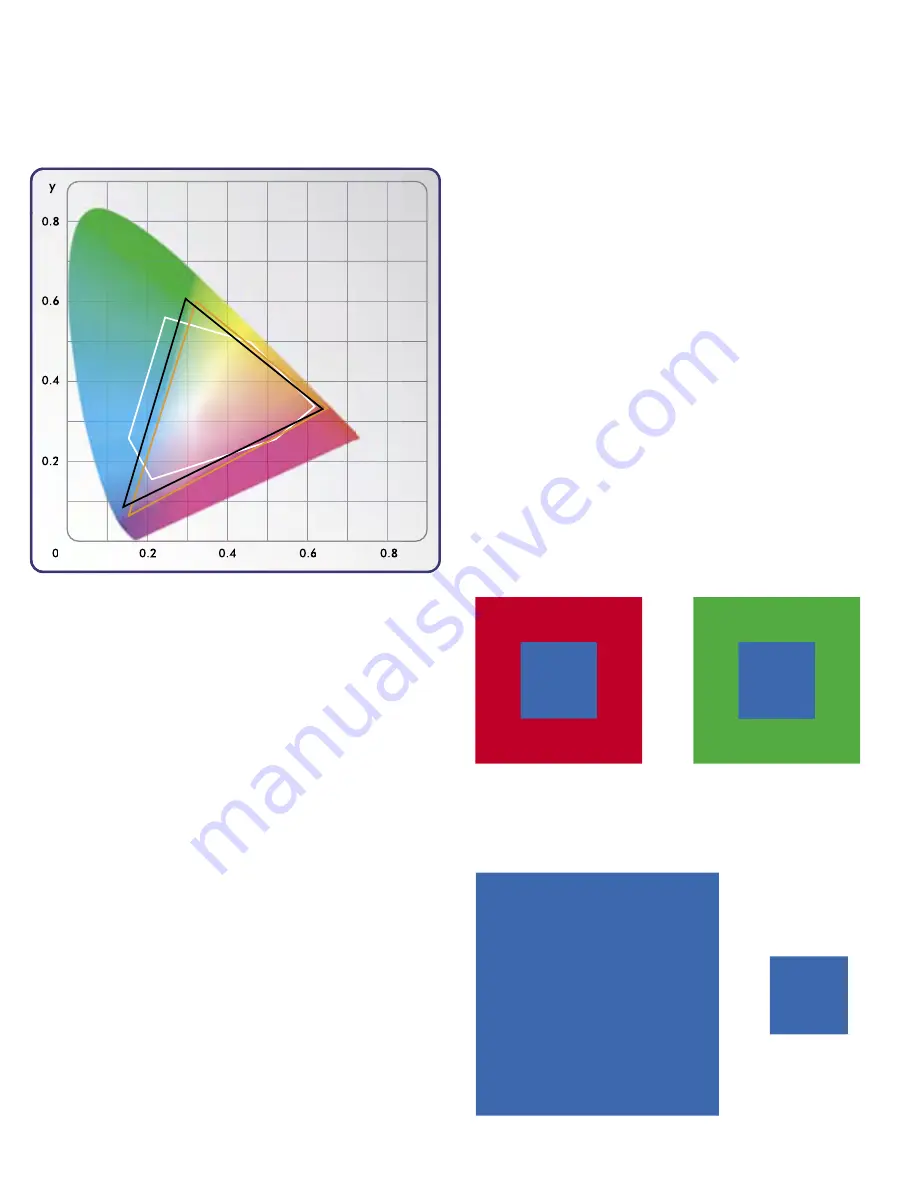
y
0.8
0
0.2
0.4
0.6
0.8
0.2
0.4
0.6
x
Monitor
sRGB
ISOcoated
representation of gamut relies on a xy-diagram
similar to the one represented in the following graph,
which compares the gamut of common monitors and
printing devices.
In this diagram, the larger ‘horseshoe’ shape
represents the entire range of colors that can be
perceived by the human eye. Additionally, the
gamuts of several devices are represented by the
triangle shapes, which encompass all of the colors
those specific devices can reproduce. As seen in the
diagram above, some colors can easily be displayed
on a computer monitor but not printed, and some
can easily be printed but not displayed on monitors.
This is inherently related to the differences between
ink technology and monitor technology.
While advancements in technology bring hope
to minimize such differences, it is probable that
gamut differences will continue to exist for the
foreseeable future.
In summary, different devices use different types
of technologies and have different gamuts.
Furthermore, the gamut of one device can change as
it gets older, and color reproduction can further vary
as a result of factory and user settings. Rather than
a single “color space” for all peripherals, there is a
range of color spaces, each a little different from the
next—requiring proper translation mechanisms.
As a consequence, a given image (for instance, a
digital photograph) will not necessarily appear
exactly the same on different monitors and printouts.
If these discrepancies are not properly managed,
they may be a source of considerable obstacles in
productivity for digital professionals, resulting in
unnecessary, time-consuming color adjustments
and degradation in document quality rather than
improvements.
2. HUMAN FACTORS: HOW RELIABLY DO OUR
EYES & BRAINS PROCESS COLOR?
People may perceive the same color in completely
different ways. There are several causes for this:
SPECTRAL SENSITIVITY VARIES FROM
PERSON TO PERSON
The way eyes perceive colors can vary according to
the age, condition and mood of the observer.
INFLUENCE OF SURROUNDING COLORS
A blue patch in a red square will look different from
the same patch in a green square.
THE FORMAT AND SIZE OF THE COLOR DISPLAYED
A larger square with the same blue will look brighter
and more powerful than a smaller square.






















